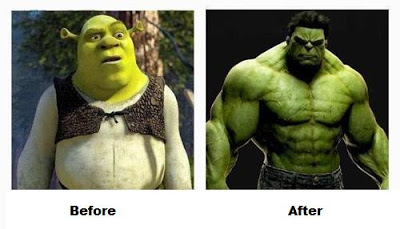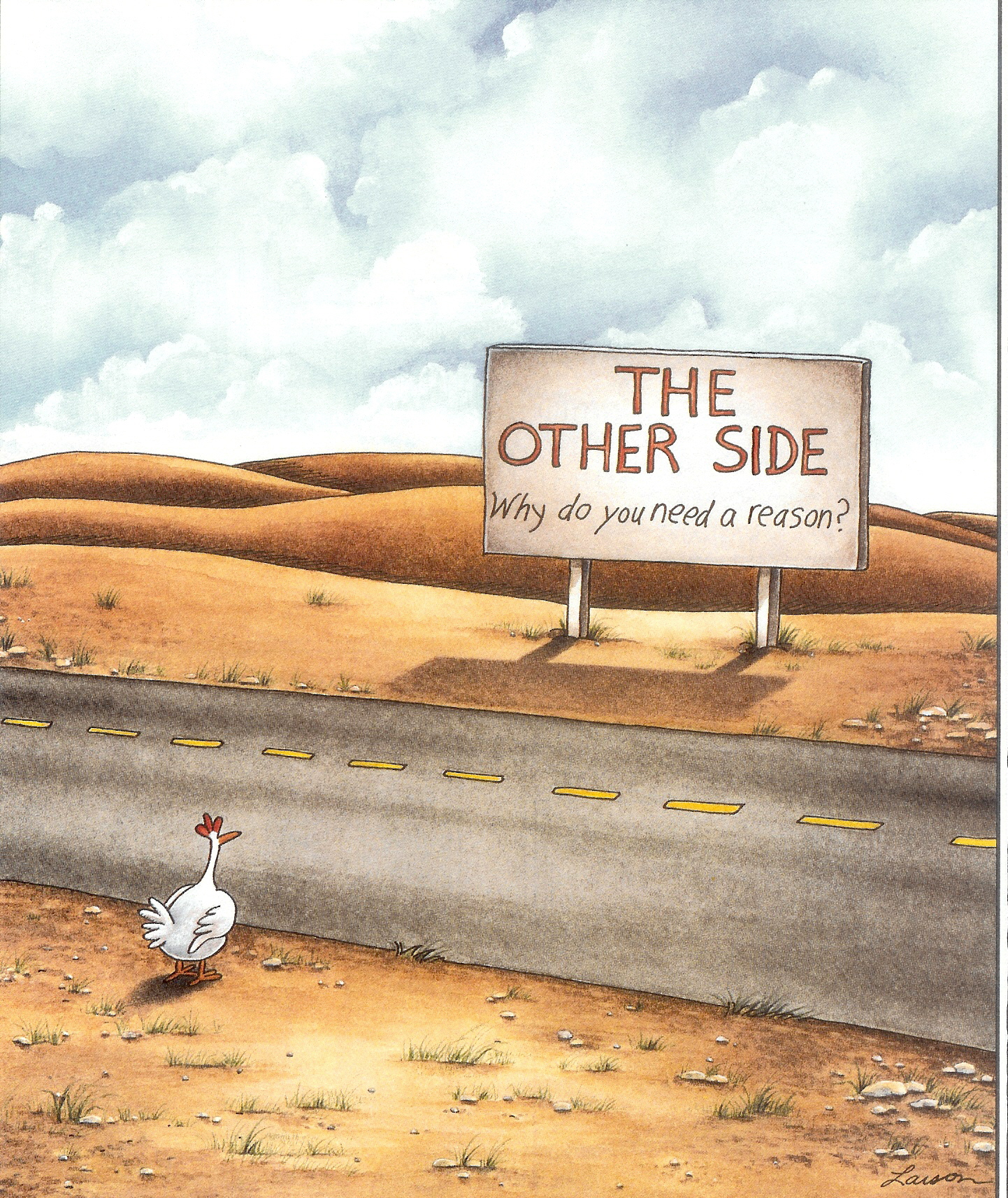STAHP! Please, just STAHP.
 There’s a dark humour quote in surgery, “There is no surgery so simple that a resident can’t screw it up.” I’ve decided to make up an adage, “There is no concept or idea that the fitness/nutrition industry can’t corrupt,” because I never thought I would have to ever, ever, write a post like this.
There’s a dark humour quote in surgery, “There is no surgery so simple that a resident can’t screw it up.” I’ve decided to make up an adage, “There is no concept or idea that the fitness/nutrition industry can’t corrupt,” because I never thought I would have to ever, ever, write a post like this.
It astonishes me that there is now a clear line in the sand between “evidence-based” trainers and non-“evidence-based” trainers. There’s even a third camp, which I’ll nick-name the “anti-evidence-based” trainers, where it’s not just a passive, I-don’t-really-read-much-research, but an active, I-explicitly-ignore-and-deride-research. Read More...
Yummy (?) but not special Part II: Bulletproof Coffee
I really didn’t think Bulletproof Coffee was going to take off like it did; and initially, I definitely didn’t want to write about it because I feel that sometimes, giving something negative publicity is still publicity and doesn’t necessarily strengthen my argument, but gives theirs more traction. However, when I saw Jill Coleman’s (@JillFit) status update, “I’m confused by Bulletproof coffee. The old fashioned version seems to do the trick just fine, no?” I realized that if Jill is confused, a lot of people are probably confused too. That, and I think anyone who reads my blog probably already knows about it, so really, I’m not giving them any MORE publicity than they already have. Read More...
Evidence and innovation: Behind or not?
Spurred on by Bret Contreras and a Facebook link from Lars Avemarie, “If you are truly evidence-based, you’re only as good as somebody else was 2 years ago,” I figured I would brush this draft off and publish it. Read More...
Holy hell balls, only 2 weeks of class on obesity? (Or, why I really shouldn’t read stuff on Huffpost)
 Medical school is full of stuff to learn. A lot of stuff. Every day is a new day of a massive volume of information. It’s like trying to take a sip from a fire hose. Residency is even more. The AMA has voted to classify obesity as a disease. An interesting move, for sure, that will ignite debate and discussion for years to come.
Medical school is full of stuff to learn. A lot of stuff. Every day is a new day of a massive volume of information. It’s like trying to take a sip from a fire hose. Residency is even more. The AMA has voted to classify obesity as a disease. An interesting move, for sure, that will ignite debate and discussion for years to come.
This has triggered a bunch of blog posts from a variety of parties who ask the obvious question: how can doctors who receive less than 2 weeks of class on obesity be adequately prepared to treat it? Read More...
When is a calorie not a calorie? To get to the other side (Yup, just another bad joke.)
This one gets bandied around a lot: “A calorie isn’t a calorie.” It’s a clever gimmicky catch-phrase because it a) challenges the reader to re-evaluate what they think is a set-in-stone rule and b) gives them the hope that the reason why they’re not making progress lies in the fact that their “truth” is in fact a lie. Read More...
30 seconds of idiocy. The cure for cancer is delayed by decades.

There was a really interesting letter in the journal Nature on Thursday, “Australia’s grant system wastes time,” which was about how much time goes into preparing a grant for funding with Australia’s National Health and Medical Research Council (in Canada, this would be the Canadian Institutes for Health Research, and in the US, the National Institutes of Health). The authors of the letter did a survey of Australian researchers and found that it took, on average, 38 working days to prepare a new proposal. They extrapolated their survey data to estimate how much cumulative time was spent by Australian researchers who applied to the NHMRC preparing grants, and estimated thatn 550 working years of research time was spent on this endeavour. As with all federal funding agencies, only a small percentage of grant proposals get funding. In 2012, that was 20.5% in Australia. So, basically, about four centuries of cumulative research time was wasted, with no return on the time spent. The point of the letter was to encourage the NHMRC to simplify the application process to decrease the time wasted.
But there’s another insidious drain on research that goes unrecognized and I think really has manifested itself only in the past 10-ish years with the explosion of self-help publishing as well as the widespread adoption of social media that permits easy viral sharing of ideas; and that is the constant distraction of sensationalism. Read More...
How statistics can protect your willpower

Today is Valentine’s Day (Happy Valentine’s/Bitter Single’s Day!). So I thought I’d give my post a brain-washing theme (cynical much? 🙂 )
With the advent of Instagram, Facebook, Twitter and now, Vine, the power of the testimonial has never been greater. It’s easy to be bombarded by images of amazing before and after, and even “now” photos of clients of trainers and nutritionists, all trying to cajole their way into your mind and ultimately into your wallet. Googling the terms “fitness”, “marketing” and “testimonial” returns over 100,000 hits, the first few pages of which are testimonials on how testimonials can help grow a fitness business. How’s that for meta? Read More...
You don’t add higher octane gas to the house that’s on fire to put it out.

The World Health Organization’s definition of health, which I had to memorize in the first month of medical school, is, “The state of complete physical, mental and social well-being and not merely the absence of disease or infirmity.”
Personally, I think this is ridiculous because it’s basically tautological. The term “well-being” is essentially synonymous with “health”. In fact, the Merriam-Webster dictionary defines “well-being” as, “The state of being happy, healthy or prosperous.” Way to go, 1948 WHO’er’s. It’s like looking in the dictionary for the definition of “happy” and seeing “not sad” and then looking up “sad” and seeing its definition as “not happy.” (Flashbacks to being the child of immigrant parents inserted here. And yes, I was a weird kid and yes, my parents will tell you that.) Read More...
Toe-ing the line: What I think about this whole shoe thing
 Oldest discovered leather shoe: 5500 years old
Oldest discovered leather shoe: 5500 years old
I’ve had a few emails asking me to review some of the literature on the new shoe trend. Every company is jumping on the bandwagon to create their version of the Vibram five TOE shoes (sorry, I’m going to be a hand and wrist sub-specialist. Toes are NOT fingers). It’s a little reminiscent of the “body-toning” shoe thing, without all of the wildly outrageous claims, and a trend that I think will live long enough to warrant weighing in on. Most studies to date have really focused on how the shoes alter foot and gait biomechanics. I would argue that most of the claims on the Vibram website are still largely unsubstantiated or just what I call “motherhood statements”, like: “Eating your greens is good for you,” and “Puting on your jacket when it’s cold outside is good for you.” (basically, statements that don’t really have any clout one way or another, but just make you feel better.) Read More...
Restriction: It’s not just for calories
 I’m sitting in the Newark airport and having a sandwich at the Earl of Sandwich (it’s the only place I can sit down here, it seems). There was a sign as I came up the ramp for “PI” stating that “He’s a child isn’t a diagnosis”, implying that your child’s cold could be a sign of “PI”. As I’m sitting here eating this club sandwich, there’s another sign outside the restaurant also for “PI” or “Primary Immunodeficiency”.
I’m sitting in the Newark airport and having a sandwich at the Earl of Sandwich (it’s the only place I can sit down here, it seems). There was a sign as I came up the ramp for “PI” stating that “He’s a child isn’t a diagnosis”, implying that your child’s cold could be a sign of “PI”. As I’m sitting here eating this club sandwich, there’s another sign outside the restaurant also for “PI” or “Primary Immunodeficiency”.
Primary immunodeficiency is a condition that affects (at best estimate) about 1 in 100 000 births. There are at least 5000 people that see that sign every day. Of those 5000 people, a much lower number of them will have children and even lower still, the number of those individuals who have a child less than 1 year old. In 20 days (almost a month), that sign would be applicable to a single individual if they were all infants under the age of 1. How many days would it take to pick up one case of PI? Probably more than 6 months to a year. Important? Yes. Because PI or SCID (Severe combined immunodeficiency) can result in DEATH before the age of one year if untreated. Read More...


